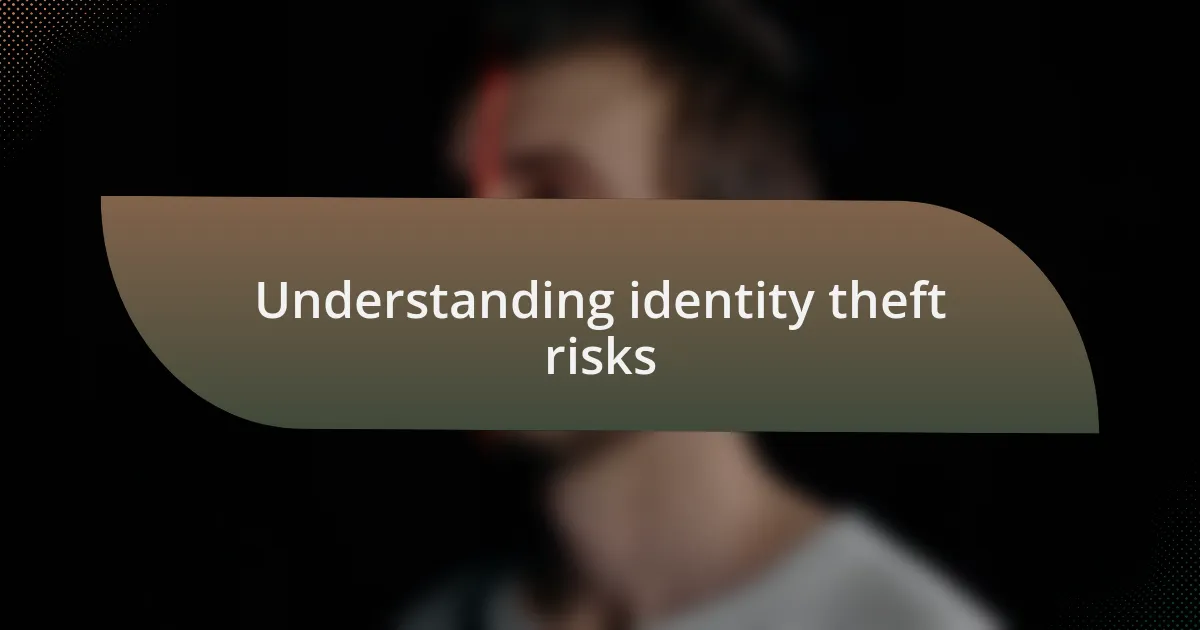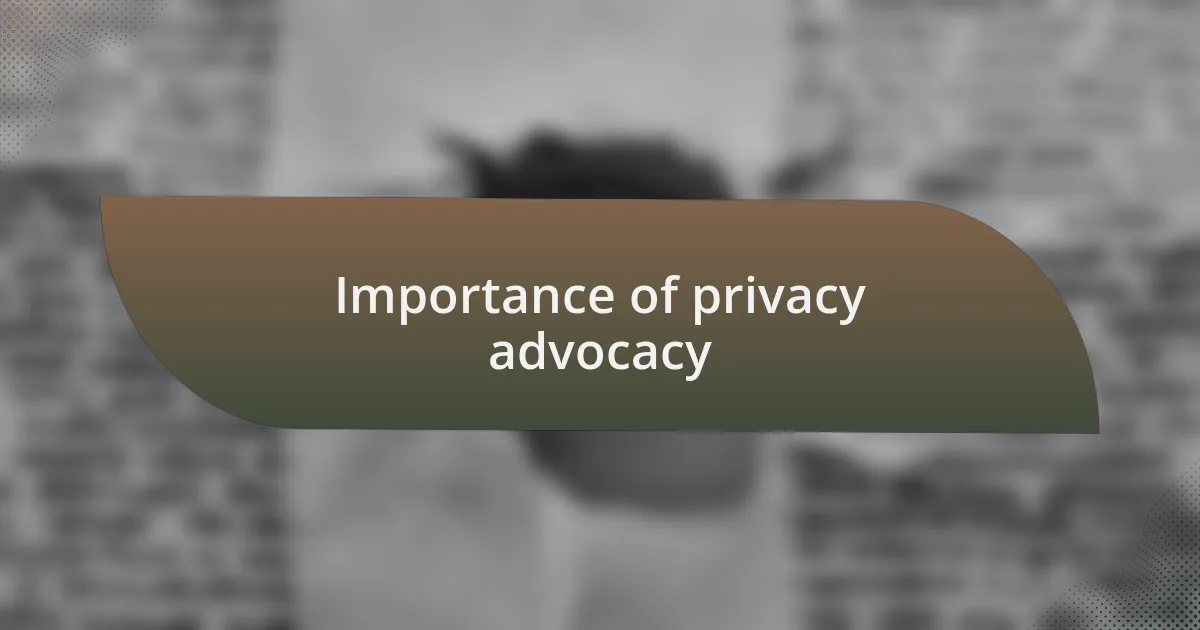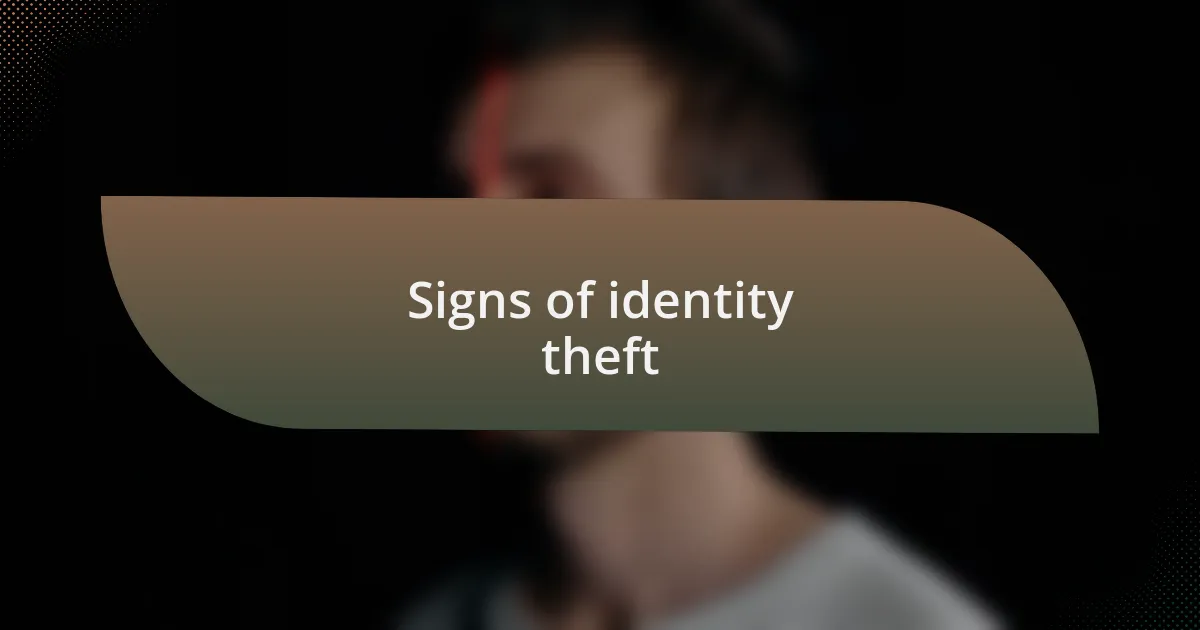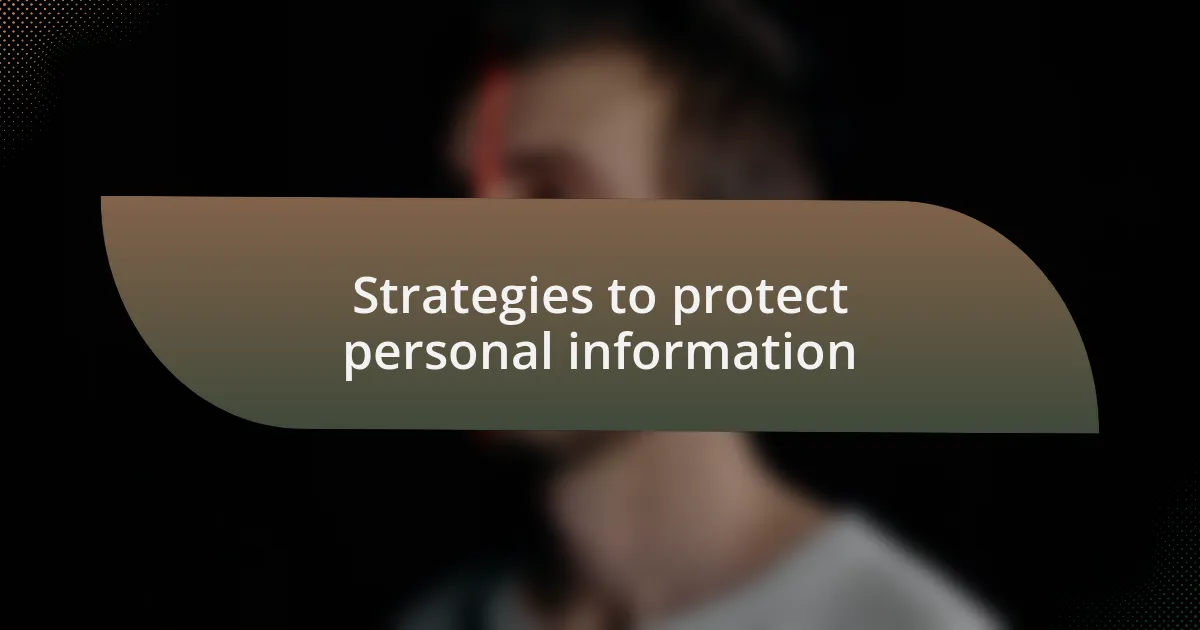Key takeaways:
- Identity theft can occur through various methods, such as phishing emails and using public Wi-Fi, highlighting the need for vigilance in online security.
- Recognizing signs of identity theft, like unfamiliar transactions or unexpected bills, is crucial for prompt action and monitoring personal finances.
- Implementing strong, unique passwords and enabling two-factor authentication are effective strategies for protecting personal information.
- Privacy advocacy raises awareness and support, empowering individuals to safeguard their data and reduce the risks of identity theft.

Understanding identity theft risks
Identity theft is more common than many people realize, and understanding the risks involved is crucial. I remember when a friend’s information was compromised; it felt surreal how quickly their life changed. One moment, everything was fine, and the next, they were buried under a mountain of debt that wasn’t theirs. It made me wonder—how could someone steal another person’s identity so easily?
Consider the various forms of identity theft, from credit card fraud to online scams. I’ve often found myself questioning how much of my personal information is just out there, available for anyone to misuse. The thought can be overwhelming, but it highlights the importance of being proactive about protecting personal data. For instance, my experience with a phishing email opened my eyes to the lengths scammers will go to exploit unsuspecting individuals.
It’s not just about stolen credit cards; identity theft can affect your entire life, impacting employment and relationships. I’ve seen firsthand how it can erode trust and lead to anxiety and frustration. Have you ever thought about how a single data breach could derail your future? Understanding these risks isn’t just an exercise; it’s a necessity for safeguarding our identities in today’s digital world.

Importance of privacy advocacy
Privacy advocacy is essential because it empowers individuals to take control of their personal information. I recall a time when I stumbled upon a privacy policy that was nearly impossible to decipher; it left me questioning how much I truly understood about my digital footprint. This isn’t just about understanding the legal jargon—it’s about recognizing the power we have in our own data.
When people advocate for privacy, they create a culture of awareness that can reduce the risks of identity theft. I often share my concerns with friends about their online habits, and sometimes, I see them light up with realization when I explain the potential consequences of oversharing. Isn’t it fascinating how a simple conversation can lead to a newfound vigilance?
Moreover, privacy advocacy fosters community support, encouraging individuals to share experiences and resources. I’m part of a local group focused on digital security, and I’ve learned so much just by listening to others’ stories. It reassures me that I’m not alone in this fight. Have you ever felt empowered by the support of others in tackling a common issue? It strengthens our resolve to advocate for ourselves and each other.

Common identity theft tactics
Identity theft tactics can be surprisingly simple yet effective, often relying on the unsuspecting nature of the victim. For instance, phishing emails trick you into revealing personal information by posing as trustworthy sources. I vividly remember receiving an email that looked like it was from my bank, and it almost got me. How many times have you glanced at an email and thought twice before clicking a link?
Another common tactic is the use of public Wi-Fi networks. Many people think they’re secure at their favorite café, but I learned the hard way how easily hackers can intercept data. One day, I used a public network to access my account, only to later receive alerts about unauthorized transactions. It’s a stark reminder that convenience can come at a price.
Social engineering is a crafty method that preys on human psychology. Scammers can manipulate emotions, using urgency or panic to elicit quick responses. I’ve encountered phone calls that play on fears, like fake threats about taxes owed. Have you ever felt pressured by a situation where you had to act immediately? It’s this very instinct that identity thieves exploit to steal our information.

Signs of identity theft
When I began noticing unusual transactions on my bank statements, urgency turned into a sinking feeling in my stomach. It’s unsettling to see charges that you don’t recognize, and it often indicates that someone may have accessed your finances without permission. Have you ever stared at a charge and wondered who made it?
Another sign that often goes unnoticed is the sudden change in your credit score. I once experienced a significant drop for no clear reason, which triggered a deeper investigation on my part. This was a pivotal moment for me, revealing that my identity might have been compromised. It made me realize how vital it is to monitor my credit report regularly—something I now do without fail.
If you start receiving unfamiliar bills or notices in the mail, it could be a red flag waving in your face. Once, a mysterious bill for a service I never subscribed to landed in my mailbox. The shock was amplified by the realization that someone was using my information to gain services fraudulently. It’s a moment that certainly leaves you questioning how secure your personal data really is.

Strategies to protect personal information
When it comes to protecting personal information, I’ve found that utilizing strong, unique passwords is one of the most effective strategies. There was a time when I used the same password across multiple accounts, and I was shocked to learn that a single data breach could expose all my information at once. Now, I rely on a password manager to generate random, complex passwords for each account—do you ever think about how many passwords you juggle in daily life?
Regularly updating my passwords has become a habit, just like changing the locks on my front door after moving into a new place. I remember the unease I felt when I read about a major online service that had been hacked. It prompted me to change my passwords immediately. This simple yet vital step can significantly reduce the risk of unauthorized access to your accounts.
Another strategy I swear by is enabling two-factor authentication (2FA) wherever possible. One time, I almost panicked when I received a notification that someone was trying to log into my account from an unfamiliar device. Thankfully, the 2FA system kicked in and prevented the access. Isn’t it reassuring to know there’s an extra layer of protection guarding your personal information? These strategies are crucial, and they’ve empowered me to take control of my own security.